 W
WThe culture of Finland combines indigenous heritage, as represented for example by the country's national languages Finnish and Swedish, the sauna, with common Nordic and European cultural aspects. Because of its history and geographic location, Finland has been influenced by the adjacent areas, various Finnic and Baltic peoples as well as the former dominant powers of Sweden and Russia. Finnish culture is built upon the relatively ascetic environmental realities, traditional livelihoods, and heritage of egalitarianism and the traditionally widespread ideal of self-sufficiency.
 W
WAurora Society was a secret society and a national Finnish literary society at the Royal Academy of Turku from 1770 to 1779. The Society consisted of many prominent members of the Finnish cultural sphere and had as its focal points poetry, Finnish history, geography and the research of language and economy.
 W
WBath broom ; Lithuanian: vanta) is a besom, or broom, used for bathing in saunas, such as Russian banyas.
 W
WChristmas Peace is a tradition based on old Swedish legislation created by Birger Jarl in the 13th century, extending the tradition of the Truce of God. Offenders who committed crimes on religious holidays like Christmas were given harsher punishments. Today it is a tradition to recommend that people behave in a respectful and peaceful manner at Christmas. The Declaration of Christmas Peace has remained in Finland where it is an essential part of the Christmas tradition.
 W
WCinnamon Roll Day falls on 4 October each year. It is an annual theme day created for marketing purposes in Sweden and Finland that was instituted in 1999 by Kaeth Gardestedt. At the time, she was a project manager for Home Baking Council (Hembakningsrådet) which was historically a trade group supported by yeast manufacturers, flour producers, sugar manufacturers, and margarine manufacturers, and is now supported by the Dansukker brand of sugar.
 W
WCommemoration Day of Fallen Soldiers is the commemoration day observed in Finland on the third Sunday of May for the soldiers killed in the Winter War and Finnish Civil War 1918. After 1940 it was also the day of commemoration of the soldiers killed in the Continuation War and the Lapland War. There were also members of Lotta Svärd, who also were victims of war serving in uniforms on the front. Nowadays the day also commemorates Finnish soldiers killed in United Nations peacekeeping missions.
 W
WA crayfish party is a traditional summertime eating and drinking celebration in the Nordic countries. The tradition originated in Sweden, where a crayfish party is called a kräftskiva. The tradition has also spread to Finland via its Swedish-speaking population, and Norway. A similar tradition exists in the Baltic countries in particular in Lithuania and Latvia.
 W
WA dish drying cabinet is a piece of kitchen shelving placed above the sink, with an open bottom and shelves made of steel wire or dowels to allow washed dishes set within to drip into the sink and air dry.
 W
WWLUC-TV, virtual channel 6, is a dual NBC/Fox-affiliated television station licensed to Marquette, Michigan, United States, serving the Central and Western Upper Peninsula of Michigan. The station is owned by Gray Television. WLUC-TV's studios are located on US 41/M-28 in Negaunee Township, and its transmitter is located on South Helen Lake Road in Republic Township southeast of unincorporated Republic.
 W
WThe Finnish Academy of Science and Letters is a Finnish learned society. It was founded in 1908 and is thus the second oldest academy in Finland. The oldest is the Finnish Society of Sciences and Letters, which was founded in 1838.
 W
WFinnish art started to form its individual characteristics in the 19th century, when romantic nationalism began to rise in the autonomous Grand Duchy of Finland.
 W
WFinnish Swedish Heritage Day is a general flag flying day, which is celebrated in Finland on 6 November. The day celebrates the Swedish-speaking population of Finland, their culture, and the bilinguality of Finland. The main celebrations are aired on the radio, and many smaller celebrations are held around Finland in schools. Usually, the song Modersmålets sång is sung, celebrating the mother tongue. The Finnish Swedish Heritage Day is celebrated on the same day as Gustavus Adolphus Day in Sweden, the day that king Gustavus Adolphus of Sweden was killed at the Battle of Lützen in 1632.
 W
WFlag flying days in Finland are days of the year when the national flag is flown nationwide, either by law or by custom. The flag of Finland is generally flown only on special occasions to celebrate or honour someone or something. On certain days of the year the state officially flies the flag, and recommends all private citizens to do so as well, these are the flag flying days as listed below. Any citizen has a right to fly the flag on their own property if they deem it appropriate, for example in celebration of birthdays or weddings in the family. Midsummer’s day is additionally celebrated as Flag Day in Finland.
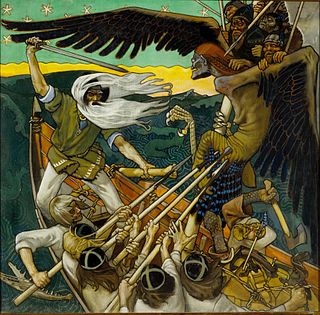 W
WThe Golden Age of Finnish Art coincided with the national awakening of Finland, during the era of the Grand Duchy of Finland under the Russian Empire. It is believed to span an era from the late 19th Century to the early 20th Century, approximately 1880 to 1910. The epic poetry form known as Kalevala, developed during the 19th Century, provided the artistic inspiration for numerous themes at the time, including in visual arts, literature, music and architecture; however, the "Golden Age of Finnish Art" is generally regarded as referring to the realist and romantic nationalist painters of the time. Notable figures of the time include Akseli Gallen-Kallela, Pekka Halonen, Albert Edelfelt, Jean Sibelius, Eino Leino, Helene Schjerfbeck, Eero Järnefelt, Emil Wikström and Eliel Saarinen.
 W
WThe Finnish Heritage Agency, previously known in English as the National Board of Antiquities, preserves Finland's material cultural heritage: collects, studies and distributes knowledge of it. The agency is a cultural and research institution, but it is also a government authority charged with the protection of archaeological sites, built heritage, cultural-historically valuable environments and cultural property, in collaboration with other officials and museums.
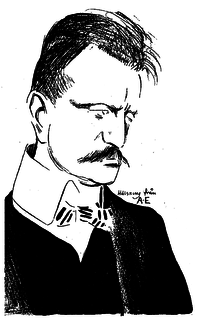 W
WIslossningen i Uleå älv, Op. 30, is a composition by Jean Sibelius, an "improvisation for narrator, men's chorus and orchestra". Sibelius composed it in 1899 on a poem by Zachris Topelius, a Swedish-language Finnish poet, who had dedicated it to Tsar Alexander II of Russia, thus escaping censorship. The piece was an "explicit protest composition" against a Russia restricting the autonomy of the Grand Duchy of Finland. Sibelius wrote it for a lottery of the Savonian-Karelian Students' Association, where he conducted the first performance on 21 October 1899.
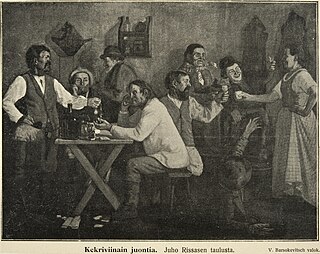 W
WKekri, also known as Keyri, Köyri, Köyry and Kööri, is a Finnish harvest festival, celebrated in the fall. Kekri was once widely celebrated in Finland, but it has been largely eclipsed by Christmas, to which many old Kekri traditions have migrated. Historically, Kekri has also referred to a deity.
 W
WLaskiainen is a celebration with Finnish origins, which includes both pagan and ecclesiastic traditions, and is often described as a "mid-winter sliding festival".
 W
WLuckan is a network of Finland-Swedish cultural centres in Finland. Currently, there are located in 11 cities and towns in Finland: Helsinki, Kimito in Kimitoön, Kirkkonummi, Kokkola, Kristinestad, Närpes, Porvoo, Karis in Raseborg, Tampere, Turku and Oulu.
 W
WNational Veterans' Day is a remembrance day for all the war veterans of Finland. It is celebrated each year on 27 April.
 W
WNordic walking is a Finnish-origin total-body version of walking that can be done both by non-athletes as a health-promoting physical activity, and by athletes as a sport. The activity is performed with specially designed walking poles similar to ski poles.
 W
WIn Finland, a pefletti is a sheet of paper, cardboard, cloth, foam rubber or other soft material that is placed on the sauna bench and then sat on. Its purpose is to maintain sanitary conditions in a sauna with a wide user base by preventing genital contact with the bench. Another reason is to prevent uncomfortable feeling because of the heat. The pefletti come in both disposable and re-usable varieties. The word pefletti is a combination of the Finnish words "peffa", which is a mild slang word for one's behind, and "tabletti", meaning placemat. The pefletti has a role in the very traditional yet various sauna habits in Finland.
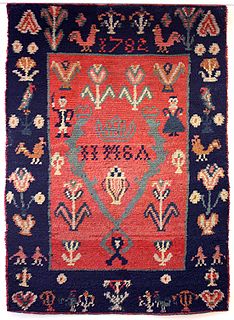 W
WRyijy is a woven Finnish long-tufted tapestry or knotted-pile carpet hanging.
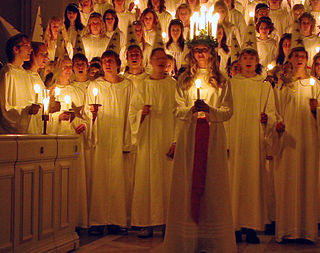 W
WSaint Lucy's Day, also called the Feast of Saint Lucy, is a Christian feast day observed on 13 December. The observance commemorates Lucia of Syracuse, an early-4th-century virgin martyr under the Diocletianic Persecution, who according to legend brought food and aid to Christians hiding in the Roman catacombs, wearing a candle lit wreath on her head to light her way and leave her hands free to carry as much food as possible. Her feast day, which coincided with the shortest day of the year prior to calendar reforms, is widely celebrated as a festival of light. Falling within the Advent season, Saint Lucy's Day is viewed as a precursor of Christmastide, pointing to the arrival of the Light of Christ in the calendar on Christmas Day.
 W
WThe Sami knife, is a large knife traditionally used by the Sami people.
 W
WA sauna, or sudatory, is a small room or building designed as a place to experience dry or wet heat sessions, or an establishment with one or more of these facilities. The steam and high heat make the bathers perspire. A thermometer in a sauna is typically used to measure heat, a hygrometer can be used to measure levels of humidity or steam. Infrared therapy is often referred to as a type of sauna, but according to the Finnish sauna organisations, infrared is not a sauna.
 W
WThe Finnish sauna is a substantial part of Finnish and Estonian culture.
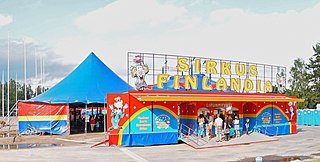 W
WKarl-Gustaf Jernström established Sirkus Finlandia in 1976.The first show of Circus Finlandia was performed 21 April 1976 in Ekenäs, Finland. Today Circus Finlandia is the only Finnish circus of international standards. It is also a member of European Circus Association. About 200 000 Finns attend Circus Finlandia's show each year.
 W
WIn Finland, the smoking figures are among the lowest in Europe. There are several factors that have influenced the decrease in the smoking prevalence, such as legislative actions, health promotion and national monitoring systems, policies aimed at reducing tobacco consumption through public awareness campaigns, advertising bans and increased taxation. Ministry of Social Affairs and Health has the leading role in tobacco control in Finland, and one of their main aims is have a more effective ban on sale of tobacco products to children and young people and to prevent sale of illegal tobacco products. Among the key elements in the successful tobacco policy is the traditional collaboration between the health authorities and non-governmental organisations, and intensive health promotion.
 W
WSvenskfinland is the common name for the areas in Finland where the majority of the Swedish-speaking population of Finland live. The Finland-Swedish information and cultural centre Luckan upholds a website featuring information about Finland's Swedish speaking minority in English; Svenskfinland.fi
 W
WTukkilaiskisat (Tukkilaiset) is a traditional timber rafting competition in Finland. Originally tukkilaiset referred to log drivers.
 W
WThe tursaansydän or tursan sydän, also called mursunsydän, is an ancient symbol used in Northern Europe. The symbol originates from prehistoric times. The tursaansydän was believed to bring good luck and protect from curses, and was used as a decorative motif on wooden furniture and buildings in Finland. During the 18th century the simple swastika became more popular in Finnish wood decoration than the more complex tursaansydän.
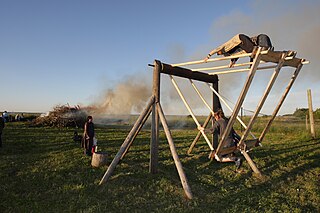 W
WVillage swing is a large swing designed for multiple adults, traditionally built on village communal land, in Estonia and Finland.